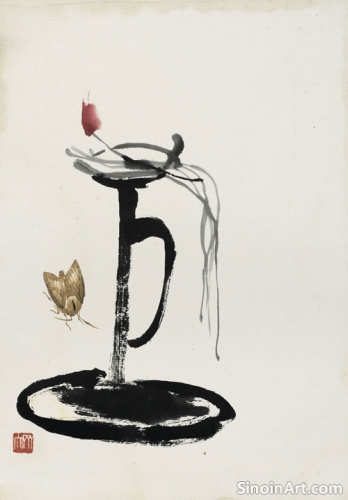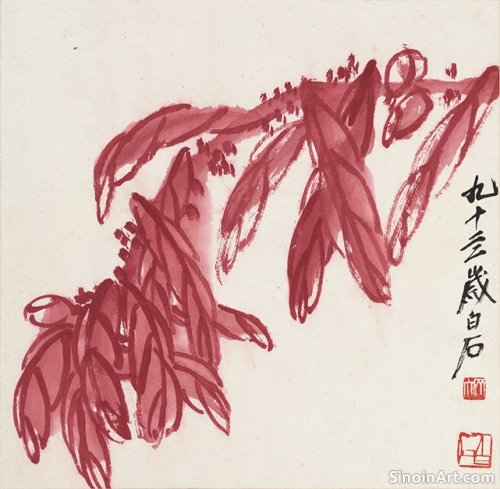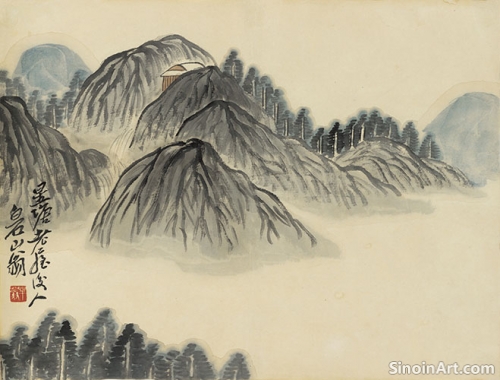The Significance of Composition in Xieyi
|
Composition is vital to the success of Xieyi painting, even within its seemingly spontaneous nature. The way the artist arranges elements on the paper, from the placement of forms to the use of negative space, influences how the viewer perceives and interprets the artwork. A well-planned composition directs the eye and creates a sense of balance and harmony.  While Xieyi embraces a certain degree of spontaneity, a good composition is often carefully considered, even if not rigidly planned. The artist must have a clear vision of how the elements will interact and how the overall composition will support the meaning and intention of the work. This consideration of balance and flow is an essential part of the creative process.  The use of negative space is a key aspect of composition in Xieyi painting. The areas left blank are not simply empty voids; they play a crucial role in defining form, creating atmosphere, and guiding the viewer's eye. The relationship between ink and space is a vital aspect of visual storytelling in Xieyi. It offers a visual counterpoint to the ink-filled areas.  Asymmetrical balance is often favored in Xieyi composition, as it creates a more dynamic and engaging visual experience. The artist may use contrasting elements such as heavy ink strokes and light washes to achieve visual interest and to direct the viewer’s eye through the composition. A sense of equilibrium is maintained through strategic placement. The use of diagonals and flowing lines can create a sense of movement and rhythm in the composition. These visual pathways lead the viewer through the artwork, enhancing its dynamism and drawing them into the scene. The rhythm of the painting, often achieved through brushstrokes and line work, creates a harmonious flow throughout the work. |
Tag : Xieyi composition, negative space, asymmetrical balance, art layout, visual rhythm
Related information
- Xieyi Painting and the Depiction of Animals
- The Symbolism of Xieyi: Expressing Inner Worlds
- The Role of the Inkstone in Xieyi
- Xieyi Landscape Painting: Capturing the Spirit of Nature
- The Spiritual and Philosophical Dimensions of Xieyi
Animals are a common subject in Xieyi painting, used to express emotions, convey philosophical ideas, and capture the essence of the animal with simplified forms and spontaneous brushstrokes, relying on cultural symbolism and careful observation of the natural world, often as metaphors for the human condition.
This article explores the symbolic elements within Xieyi painting, focusing on how subjects, composition, and brushwork contribute to the expression of the artist's inner world and cultural values.
The inkstone (yàn) is a vital part of Xieyi painting, influencing the quality and texture of ink, and serving as an object of both practical use and beauty, representing a key part of the ritual of painting and connecting the artist to tradition.
Landscape painting (山水画, shanshuihua) is a major theme in Xieyi, reflecting a deep reverence for nature. Artists seek not to replicate realistic views, but to capture the essence and spirit of the natural world. They aim to evoke a feeling of vastness, serenity, and harmony.
Xieyi painting is deeply rooted in Chinese philosophy, particularly Daoism and Chan Buddhism, emphasizing the importance of spontaneity, mindfulness, the pursuit of qi or vital energy, and the spiritual significance of emptiness in art.